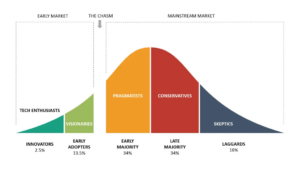
What is your reaction to the word: PERSUASION?
Positive, negative… neutral? In this episode we’ll unpack how our experiences being persuaded impacts our ability to influence others. I’ll share with you 4 Persuasion Principles you can adopt so that you can become a positive persuader (and not a manipulator).
Episode Show Notes
The words “selling” and “persuasion” illicit a visceral response from many.
When I looked up the definition on ye ole google months back, the Oxford dictionary defined it as:
- cause (someone) to do something through reasoning or argument
- cause (someone) to believe something, especially after sustained effort;
- convince.
I don’t know about you, but I don’t love the idea of being on the receiving end of that.
I’m reminded of the numerous political social media arguments between strangers who want others to believe what they believe so they scream louder with all caps.
Sustained effort.
Like if we just keep talking and pushing, we’ll wear someone down.
So when it comes to selling and persuading others to take action in our business, it’s no wonder that many shy away from it.
But what if I were to tell you that persuasion can be a good thing? That what I described below is actually a form of hubris and manipulation?
Persuasion vs Manipulation
When someone is solely focused on their perspective and ideas to convince others that their ideas or programs are perfect (the right way). When they become MORE committed to their best interest without regard for others… it becomes manipulation.
On the other hand, PERSUASION is when you offer perspective (ideas, programs, beliefs) in an effort to help someone who WANTS TO BE HELPED and is open to the conversation.
It’s about helping someone make a decision that you know they want (which might not necessarily be your product, service or program). It isn’t about convincing someone to do something they don’t want to do. It’s about offering an option to help someone do what they want to do, allowing THEM to make the choice.
Simply put, persuasion puts the benefit and the value with the end user and not yourself, (though it might be mutually beneficial). Manipulation is when you put yourself as the center as your top priority.
Ok, so what does this have to do with speaking?
When speaking on platforms, it’s your duty to attract the right people and your job to present enough relevant information and show a path to what they want. It’s your responsibility to allow them to exercise their smartness and make decisions – that’s what it is.
Accepting that not everyone will want your solution.
Have you ever seen the technology Adoption lifecycle Curve? It illustrates the acceptance of a new product or technology as a bell curve and describes segments or groups of people based on how/ when they accept a new innovation.

I like to adopt this when I’m speaking, especially on a webinar stage, understanding that not everyone will immediately adopt a new idea despite “obvious” benefits. Considering that your job isn’t to convince anyone and everyone frees you from that self-imposed expectation. Your product or service can’t and won’t help everyone. It’s also freeing to know that there’s a segment of an audience that has no interest in being helped (the laggards).
Stop focusing on THEM, instead focus your message on the early adopters (hello fast action bonuses) and early and late majority.
Applying it to persuasion and the way you communicate, you can:
(1) target those early adopters meaning somebody who already has the awareness and understands how your product or service can grow their business
(2) educate and provide a pathway for people who want to do the bigger things and showcase how they can make that happen through your product or service, that’s the middle part of the Bell Curve which is the majority of the people coming. As soon as they see the demonstrated benefits and have enough information to understand how it fits, they’re willing to jump on board. It’s simply allowing them to make the choice to see how that’s working.
(3) Stop exerting all your energy to anyone and persuade them that they actually want or need to consider the thing that you sell.
Here’s 4 principles I’ve adopted when speaking that allows me to be persuasive AND authentic to my messaging.
4 Persuasion Principles to adopt and stay in integrity
Principle #1: You have to give people context.
Make the thing that you’re talking about relevant to other people, their life, their business, their priorities and their goals. Anchor what you’re talking about to something relevant to them and help them understand where this fits in so when you offer up a tool or a teaching, they can be successful with it whether or not they move on, with or without you.
Principle #2: Sincerity
This is paramount above everything else. Sincerity means honesty, vulnerability, and authenticity. It also means not fluffing up your stuff. Be real. Share different kinds of testimonials, case studies and different kinds of wins. Balance them out to not be the big padded, raving success stories and you will really create incredible trust. Show micro successes too – sometimes it’s more powerful.
Principle #3 & #4: Confidence and Humility
If you are going to be persuasive with an audience, you have to be confident and fully believe that what you teach is solid and can help people. Humility, on the other hand, is showing vulnerability knowing and understanding that your solution isn’t the only one and that you don’t have all the answers, allowing your audience to make a decision.
Know that you can’t have one without the other. You have to balance both believing that you earned the right to be here but still allowing others to speak. At the end of the day, people invest with someone with high confidence who demonstrates humility.
Tune into the episode with the player on the top of this page, or read the full episode transcript here.